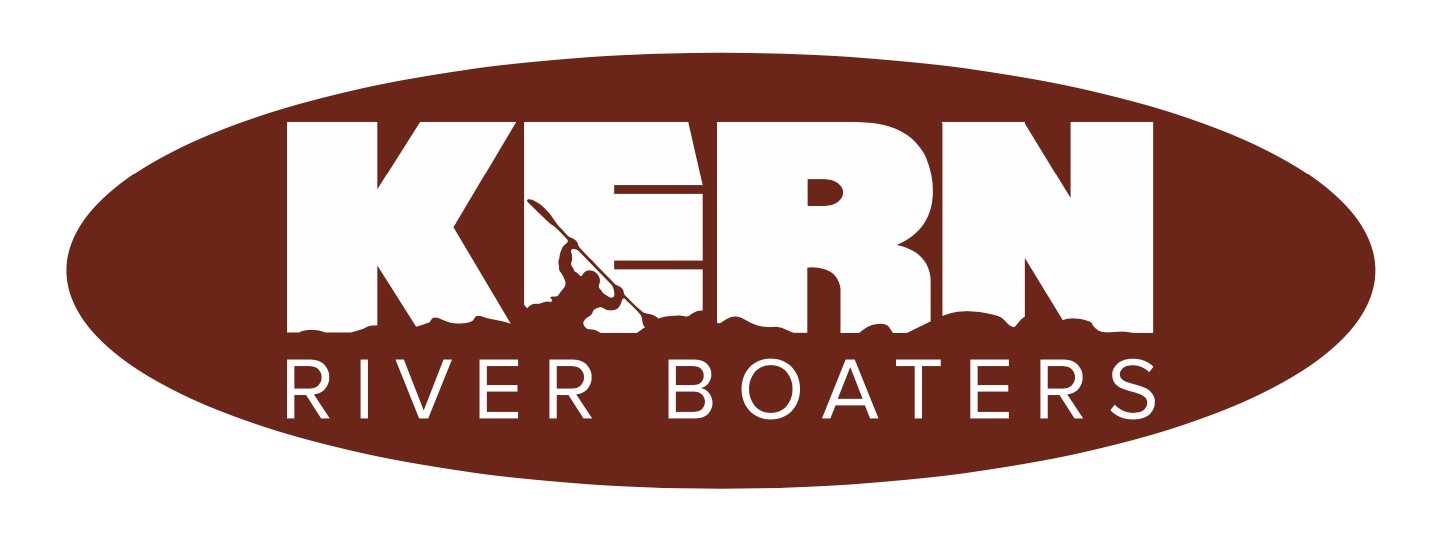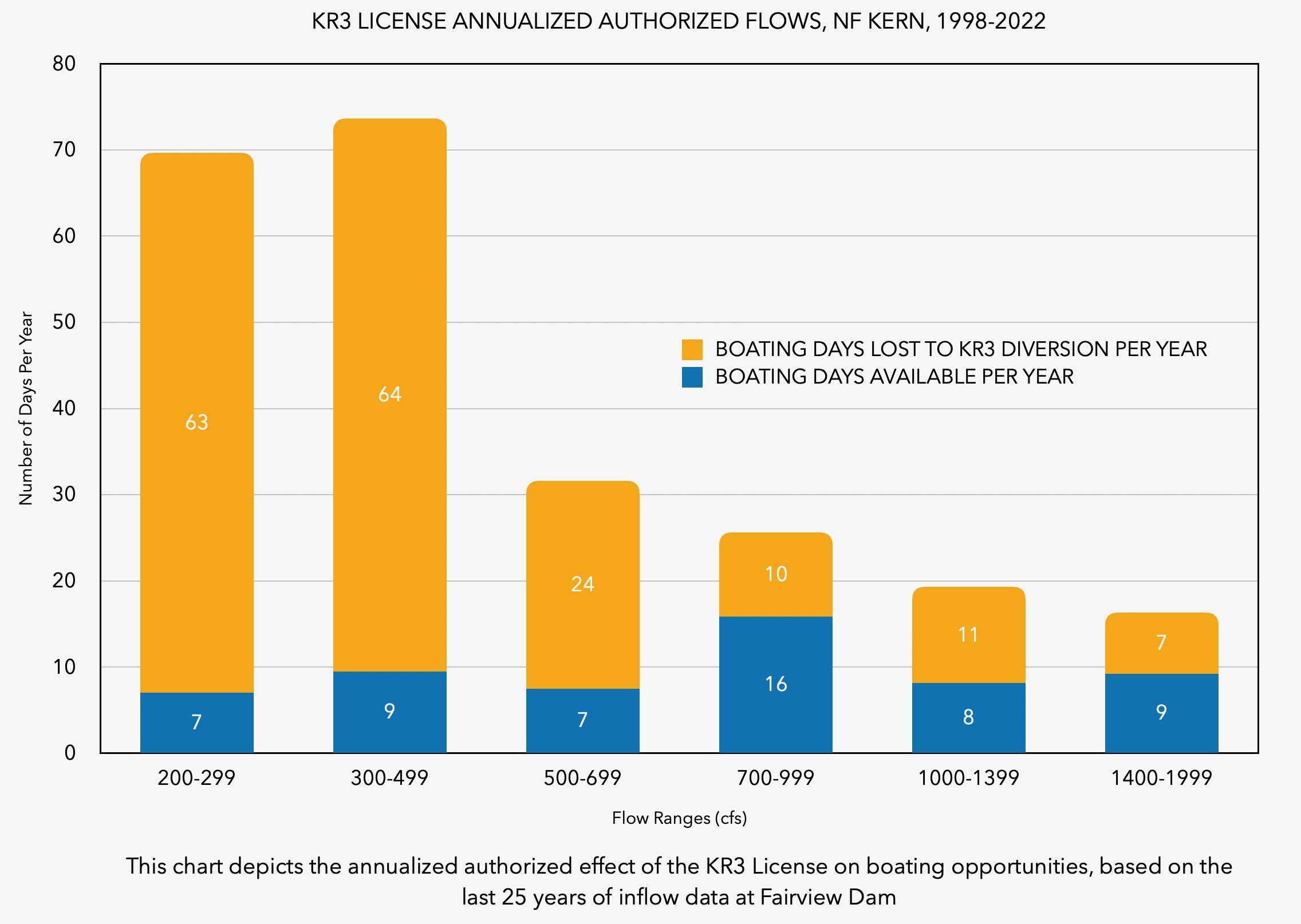Edison is fighting to maintain business as usual on the Upper Kern. At present, the FERC record recognizes a KR3 “project effect” on boating only at flows of 700 cfs and above. When you add the 300 cfs “tunnel maintenance flow” to that figure, the result is that only flows over 1,000 cfs are addressable by a rec flow schedule — and as the right two columns above show, that’s only 18 additional days per year on average. No wonder Edison wants to keep things as they are.
KRB believes the project affects boating opportunities most of the year, not just a month or two. To that end, we are asking boaters to paddle the diverted reach (Fairview through Cables) at low flows over the next week or two and favorably fill out Edison’s “Single Flow” survey: https://www.surveymonkey.com/r/KR3WWSingleflow.
We are mostly concerned with getting responses that the experience was of adequate or better quality on the various metrics (scroll right!) and that you would return to each segment at the current level. (We want it on record that we would return to each section down to 200-300 cfs (as reported at Fairview!) if it were the only thing running, because we would, given the project’s tendency to deny us boating for months on end in the shoulder seasons and for years on end when drought strikes.)
Here’s why this is important:
The Upper Kern is Southern California’s only reliable river outside of the Lower, which typically runs only in Summer. If we want a place to boat on one or two weekends a month (or more, depending on the solar argument) from September through March, we have to show we would use it and that it is worth protecting.
Almost half the time (years with low and moderate snowpack), the Upper Kern briefly peaks above 1,000 cfs for a few weeks — indeed, in the bottom 33% of years (see chart below) it reaches 1,000 cfs less than 10 days a year and never reaches that level in the bottom 20% of years. If you want something to boat in the lowest water years, and much more to boat in moderate years, including some shoulder season boating, we need to get FERC and the Forest to recognize that the project negatively impacts boating well below 700 cfs.
The solar glut offers us a compelling argument to establish a bubble of flow almost year-round, but if we don’t establish that those flows are worthy of protection, that argument will be lost.
The fact that Edison has pushed back so strongly against KRB’s initiative to unlock boating opportunities in the shoulder seasons and low snowpack years should tell you all you need to know.
The only hope for decommissioning this project is through the imposition of license conditions that protect the social and natural environments. KRB’s membership is solidly behind the decommissioning of this project given its declining social utility and its devastating impact on our river.
Many of you have asked how you can contribute to KRB’s efforts in this relicensing process. This is how. Think of all the low water years and the beautiful offseason days that we have been denied the opportunity to paddle below Fairview Dam because of the KR3 diversion. The central question is simply would you come back to paddle at a given level. If you would come back on occassion during the offseason to reconnect with the river at lower flows and keep your skills up, or during the runoff season of low and moderate years when there is little else to boat, please answer, “Yes.” Otherwise it’s likely to be business as usual for the next 40 years.


